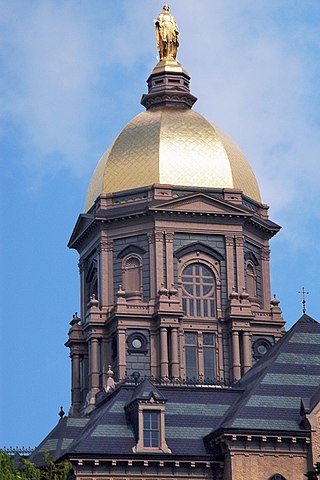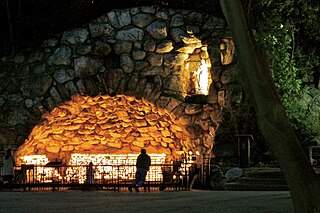
Notre-Dame de Paris, referred to simply as Notre-Dame, is a medieval Catholic cathedral on the Île de la Cité, in the 4th arrondissement of Paris, France. The cathedral, dedicated to the Virgin Mary, is considered one of the finest examples of French Gothic architecture. Several attributes set it apart from the earlier Romanesque style, particularly its pioneering use of the rib vault and flying buttress, its enormous and colourful rose windows, and the naturalism and abundance of its sculptural decoration. Notre-Dame also stands out for its three pipe organs and its immense church bells.

Cutty Sark is a British clipper ship. Built on the River Leven, Dumbarton, Scotland in 1869 for the Jock Willis Shipping Line, she was one of the last tea clippers to be built and one of the fastest, at the end of a long period of design development for this type of vessel, which ended as steamships took over their routes. She was named after the short shirt of the fictional witch in Robert Burns' poem Tam o' Shanter, first published in 1791.

Cutty Sarkfor Maritime Greenwich is a light metro station on the Docklands Light Railway (DLR) Bank-Lewisham Line in Greenwich, south-east London, so named for its proximity to the Cutty Sark in the Maritime Greenwich district. It is the most central of the Greenwich DLR stations, being situated in Greenwich town centre.

The Battersea Arts Centre ("BAC") is a performance space specialising in theatre productions. Located near Clapham Junction railway station in Battersea, in the London Borough of Wandsworth, it was formerly Battersea Town Hall. It is a Grade II* listed building.

Børsen, also known as Børsbygningen, is a 17th-century stock exchange in the centre of Copenhagen, Denmark. The historic building is situated next to Christiansborg Palace, the seat of the Danish Parliament, on the island of Slotsholmen.

Nantes Atlantique Airport is an international airport serving Nantes, France. It is located 8 kilometres (5.0 mi) southwest of the city, in Bouguenais.

The Hotel Windsor is a luxury hotel in Melbourne, Victoria, Australia. Opened in 1884, the Windsor is notable for being Melbourne's only surviving purpose-built "grand" Victorian era hotel. The Windsor pre-dates other notable grand hotels including The Waldorf Astoria in New York, the Raffles Hotel in Singapore, the Ritz in Paris and the Savoy in London.

Alumni Hall is one of the 32 Residence Halls on the campus of the University of Notre Dame and one of the 16 male dorms. It is located on South Quad adjacent to "Main Circle", across from the law school building, and it hosts 234 undergraduates.

The University of Notre Dame School of Architecture was the first Catholic university in America to offer a degree in architecture, beginning in 1898. The School offers undergraduate and post-graduate architecture programs.

Notre-Dame Basilica is a minor basilica of the Catholic Church in the historic Old Montreal district of Montreal in Quebec, Canada. It is located at 110 Notre-Dame Street West, at the corner of Saint Sulpice Street. It is situated next to the Saint-Sulpice Seminary and faces the Place d'Armes square.

Tourism in Paris is a major income source. Paris received 12.6 million visitors in 2020, measured by hotel stays, a drop of 73 percent from 2019, due to the COVID-19 pandemic. The number of foreign visitors declined by 80.7 percent. Museums re-opened in 2021, with limitations on the number of visitors at a time and a requirement that visitors wear masks.

University of Notre Dame's Main Administration Building houses various administrative offices, including the office of the President. Atop of the building stands the Golden Dome, the most recognizable landmark of the university. Three buildings were built at the site; the first was built in 1843 and replaced with a larger one in 1865, which burned down in 1879, after which the third and current building was erected. The building hosts the administrative offices of the university, as well as classrooms, art collections, and exhibition spaces. The building is listed on the National Register of Historic Places.

Notre Dame de Lourdes, known from 2012 to 2018 as St. Bernadette Parish, is a former Roman Catholic parish in Fall River, Massachusetts. A part of the Roman Catholic Diocese of Fall River, the parish was established in 1874 to serve the growing French-Canadian population located in the city's Flint Village section. Since its founding, the parish has occupied three different church buildings; a wooden structure (1874–1893), a spectacular granite church (1906–1982) and the current modern church (1986-2018). The parish complex over time has also consisted of other multiple buildings, including St. Joseph's Orphanage, The Jesus Marie Convent, a school, the church rectory, the Brothers' residence, and the former Msgr. Prevost High School. The parish also includes Notre Dame Cemetery, located in the city's south end.

The Parvis Notre-Dame – Place Jean-Paul II is a city square in Paris, France. Located in the city's 4th arrondissement on the eastern half of the Île de la Cité, the square is bordered by the Hôtel-Dieu hospital to the north, the cathedral of Notre-Dame to the east, the Seine River to the south, and the Prefecture of Police headquarters to the west. The square contains France's point zéro marker, making it the very center of Paris for the purpose of measuring travel distance. Other points of interest include the Archaeological Crypt of the Île de la Cité and Charlemagne et ses Leudes, an equestrian statue of Charlemagne.

The Grotto of Our Lady of Lourdes is located at the University of Notre Dame in Notre Dame, Indiana, United States, and is a reproduction of the Grotto of Our Lady of Lourdes in Lourdes, France. The current Grotto was built in 1896, replacing a wooden grotto built on August 22, 1878. An artificial rock cave, the Grotto is used by its visitors as a sacred space for prayer, meditation, and outdoor Mass.

On 15 April 2019, just before 18:20 CEST, a structural fire broke out in the roof space of Notre-Dame de Paris, a medieval Catholic cathedral in Paris, France. By the time the fire was extinguished, the cathedral's wooden spire (flèche) had collapsed, most of the wooden roof had been destroyed, and the cathedral's upper walls were severely damaged. Extensive damage to the interior was prevented by the vaulted stone ceiling, which largely contained the burning roof as it collapsed. Many works of art and religious relics were moved to safety, but others suffered smoke damage, and some of the exterior art was damaged or destroyed. The cathedral's altar, two pipe organs, and three 13th-century rose windows suffered little or no damage. Three emergency workers were injured. The fire contaminated the site and nearby areas of Paris with toxic dust and lead. Notre-Dame did not hold a Christmas Mass in 2019, for the first time since 1803. Investigators in 2020 believed the fire to have been "started by either a cigarette or a short circuit in the electrical system".

Andrew J. Tallon was a Belgian art historian. He used lasers to create a precise model of Notre-Dame de Paris, among other buildings.

The Spire of Notre-Dame de Paris is located above the cross-section of the cathedral's Transept. Notre-Dame de Paris has had three timber spires made of oak, known as flèches. The first was built between 1220 and 1230. It eventually became so damaged that it was removed in the late 18th century. The second was put into place by the French architect Eugène Viollet-le-Duc in 1859, and destroyed in a major fire on 15 April 2019. Work to construct a third one started in 2022, and was completed when the new copper rooster wind vane was placed on top of the new spire on 16 December 2023, and the third spire was unveiled on 13 February 2024.




















